| |
|
|
| Tufftride
QP, QPQ |
|
|
|
Tufftride
is a salt bath nitriding process by Dufferit in Germany,
and has been in use in a wide range of industries.
- The process
is carried out in a subcritical (510~580oC) bath,
where nitrogen and small amount of carbon are diffused
into the surface of component and conform e-iron compound
on surface layer of component.
- The hardness
of compound layer, ranging from 400 to 1200 HV depending
on the base material used, is responsible for fatigue,
wear and galling resistance
|
| Examples
of Application |
- Hot work tools
: Forging, extrusion, die casting mould
- Cold work tools
- High speed
steel tools
- Crank shaft,
Cam shaft
- Cylinder liner,
block & head
- Gears
- Diesel engine
valve
- Plastic injection
screw & barrel
- Food processing
equipments & tools
|
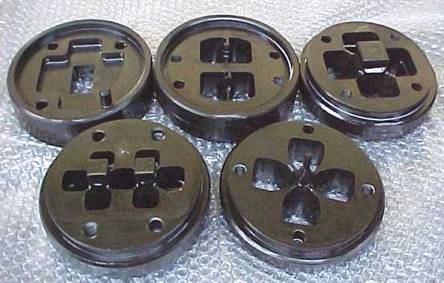 |
- QP is the liquid
soft nitriding process applicable for any kind kind
of steel.
- Process is very
quick compared with the other nitriding process in
case of both small or large lot production.
- High surface
hardness obtained by theis process, makes tool life
longer.
- QPQ is an oxidizing
cooling process by using special salt of AB1, after
QP process is done.
- By applying
QPQ treatment, corrosion resistance will be much improved
along with wear resistance
|
|
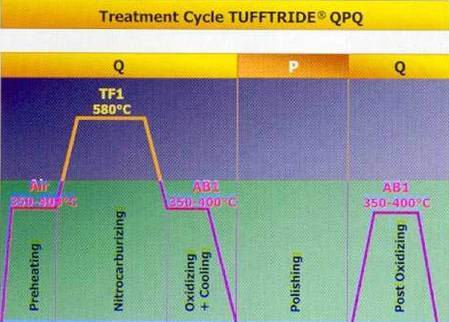
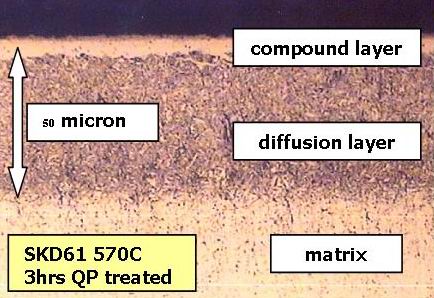
|
| Hardness
and Case depth |
|
Nitrided layers
by Tufftride process consists of white layer (compound
layer) and diffusion layer
- Characters
of surface of product is mainly affected by white
layer.
- Surface hardness
and thickness of both layers depend on the material
used and on nitriding duration.
- Figures right
are quoted from Bohler book.
|
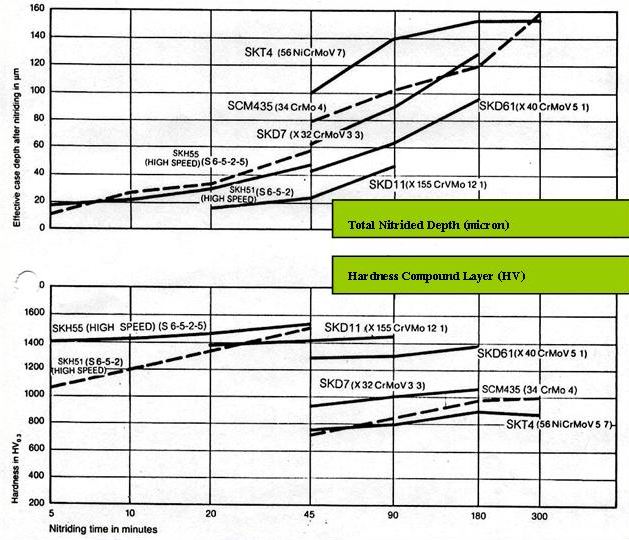 |
| Our
Facilities |
Ø 500
x 750 mm
Ø 710 x 1500 mm
Ø 1000 x 1500 mm
- QPQ AB1 SALT
BATH
50x1000x1400mm
Ø 1000
x 1500 mm
|
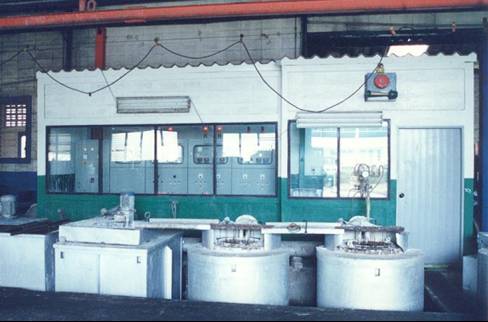 |
| Corrosion
Resistance by QPQ |
|
By
applying Tufftride QPQ process, corrosion resistance
is dramatically improved.
To
determine the corrosion resistance of sample and component,
a salt spray test (German Standard DIN 50021) and a
total immersion test (DIN 50905) are often carried out.
The
under figure shows the result of a salt spray test by
a 5% salt solution at 35o C on both hard chrome plated
piston rod and Tufftride QPQ treated carbon steel bars.
After 40 hours, the first corrosion spots occurred on
the chrome plated piston rods. After 180 hours, the
chrome plated rods showed very heavy corrosive attack
over a large area. The QPQ treated rods, however, showed
no sign of corrosion.
|
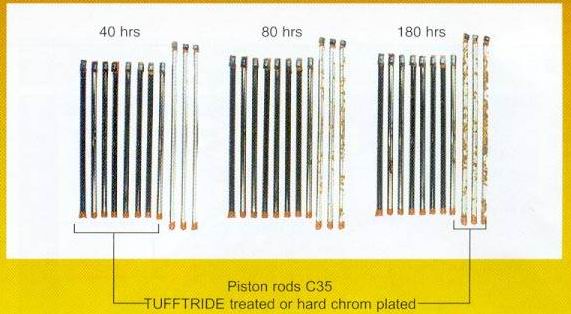 |
|
|
Top
|
|
|
|




